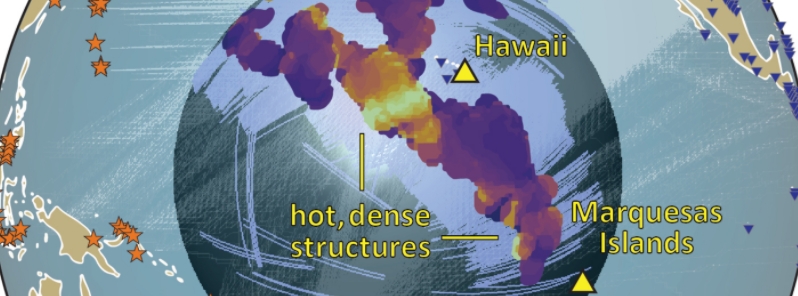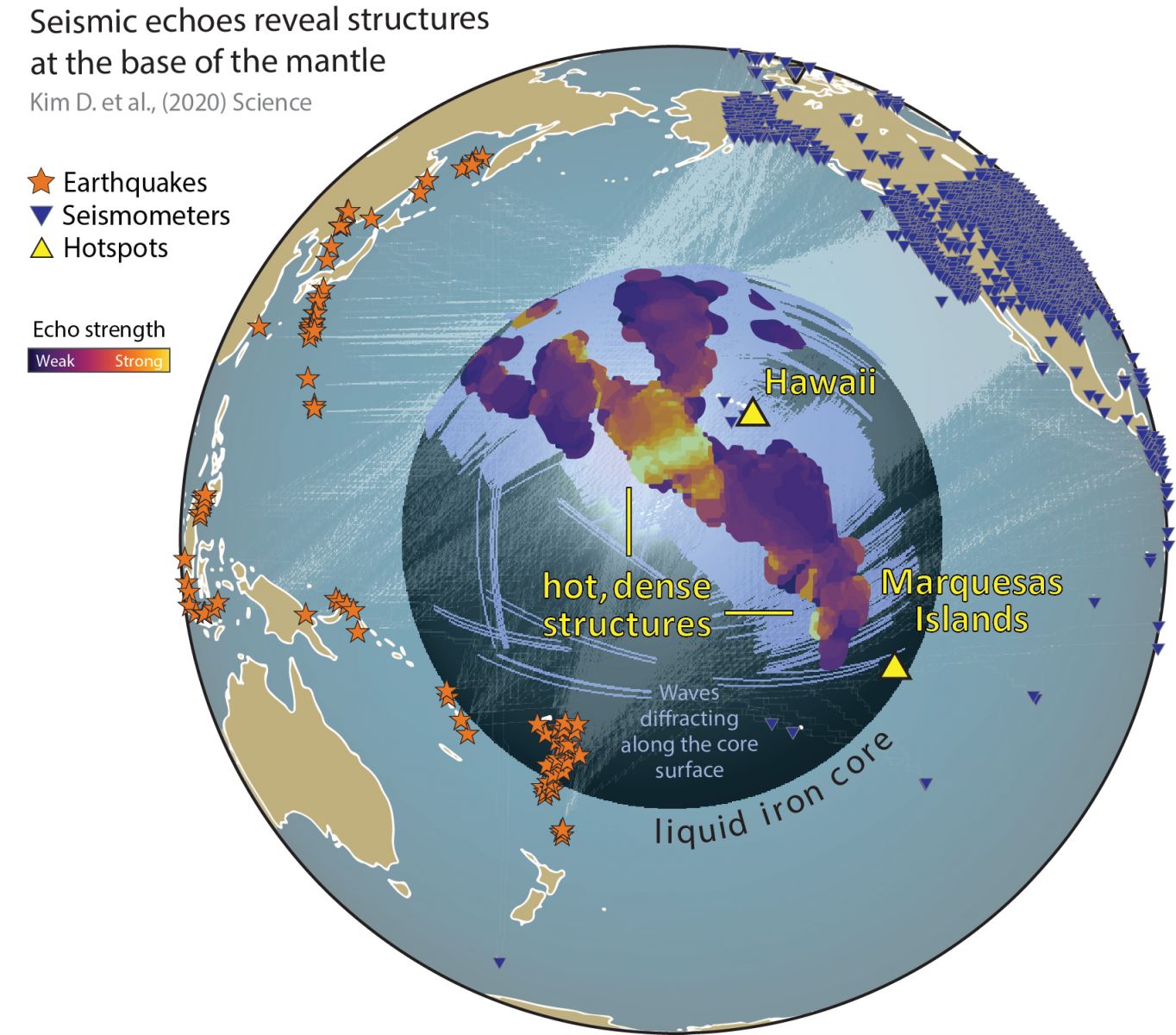Geophysicists detect widespread structures near the Earth’s core

Geophysicists from the University of Maryland made the first analysis of seismic echoes from hundreds of earthquakes at once, unveiling more widespread, heterogenous structures at the core-mantle boundary than previously known. Past studies were limited to single quakes analysis, providing only a limited knowledge of the structure deep in the Earth.
The new study provided the first comprehensive view of the core-mantle boundary with such detailed resolution. The geophysicists focused on echoes of seismic waves traveling beneath the Pacific Ocean basin. It unveiled a new structure beneath the volcanic Marquesas Islands in the South Pacific and showed that the structure is much bigger than previously known.
"By looking at thousands of core-mantle boundary echoes at once, instead of focusing on a few at a time, as is usually done, we have gotten a totally new perspective," said lead author Doyeon Kim, a postdoctoral fellow in the UMD Department of Geology.
"This is showing us that the core-mantle boundary region has lots of structures that can produce these echoes, and that was something we didn't realize before because we only had a narrow view."
Kim and his colleagues looked for echoes produced by a particular type of wave called a shear wave. In a seismogram, echoes from diffracted shear waves can be hard to determine from random noise. However, looking at many seismograms from many tremors at once can reveal similarities and patterns that identify the hidden echoes.
Using the Sequencer learning algorithm machine, geophysicists studied 7 000 seismograms from hundreds of earthquakes of M6.5 and greater around the Pacific Ocean from 1990 to 2018.
"Machine learning in earth science is growing rapidly and a method like Sequencer allows us to be able to systematically detect seismic echoes and get new insights into the structures at the base of the mantle, which have remained largely enigmatic," said Kim.

Image credit: Kim D. et al.
"We found echoes on about 40 percent of all seismic wave paths. That was surprising because we were expecting them to be more rare, and what that means is the anomalous structures at the core-mantle boundary are much more widespread than previously thought," said co-author Vedran Lekic, an associate professor of geology at UMD.
The geophysicists found that the large patch of very dense, hot material near the core generated uniquely loud echoes, signifying that it is even bigger than past estimates. The patches, known as ultralow-velocity zones, are located at the roots of volcanic plumes, where hot rock rises from the core-mantle boundary region to generate volcanic islands. The ULVZ beneath Hawaii is the largest known.
"We were surprised to find such a big feature beneath the Marquesas Islands that we didn't even know existed before. This is really exciting because it shows how the Sequencer algorithm can help us to contextualize seismogram data across the globe in a way we couldn't before."
Reference
"Sequencing seismograms: A panoptic view of scattering in the core-mantle boundary region" – Kim, D. et al. – Science – DOI: 10.1126/science.aba8972
Abstract
Scattering of seismic waves can reveal subsurface structures but usually in a piecemeal way focused on specific target areas. We used a manifold learning algorithm called “the Sequencer” to simultaneously analyze thousands of seismograms of waves diffracting along the core-mantle boundary and obtain a panoptic view of scattering across the Pacific region. In nearly half of the diffracting waveforms, we detected seismic waves scattered by three-dimensional structures near the core-mantle boundary. The prevalence of these scattered arrivals shows that the region hosts pervasive lateral heterogeneity. Our analysis revealed loud signals due to a plume root beneath Hawaii and a previously unrecognized ultralow-velocity zone beneath the Marquesas Islands. These observations illustrate how approaches flexible enough to detect robust patterns with little to no user supervision can reveal distinctive insights into the deep Earth.
Featured image credit: Kim D. et al.

These structures have been discussed in detail on the YT site of Suspicious Observers